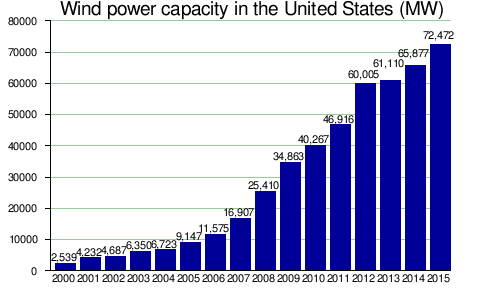You do know that installed capacity is not the same as actual output don't you?US

WORLD

Projections made in 2008 concluded that total global installed wind capacity would reach 318 GW by 2030. That capacity was surpassed by 2015 and we will pass 520 GW by the end of this year. A terawatt of world wind capacity by 2030 is easily within reach.
Wind power on average only produces 25% or less of its installed capacity
He knows....but fakers are constantly conveying disinformation. Like on costs....they ALWAYS identify the final costs and leave out the attendant astronomical costs of installation of transmission lines. Pure fakery....but they know there are alot of dummies out there who are easily suckered, particularly mellenials.




 .....for such a dumbfucker!
.....for such a dumbfucker!